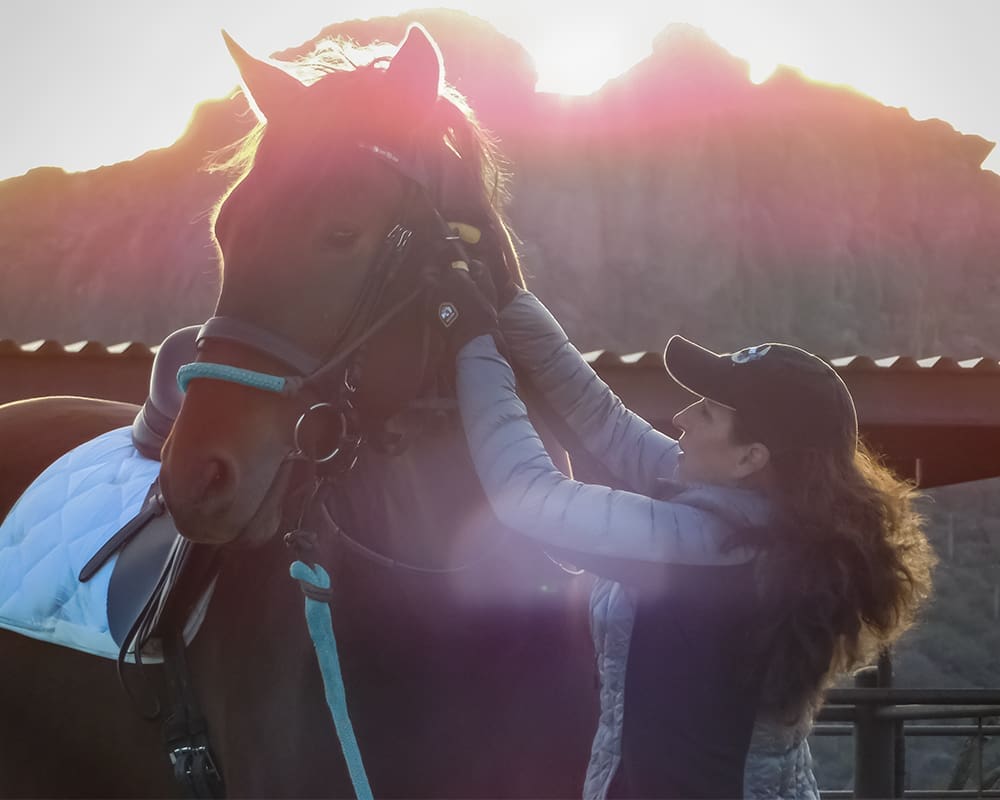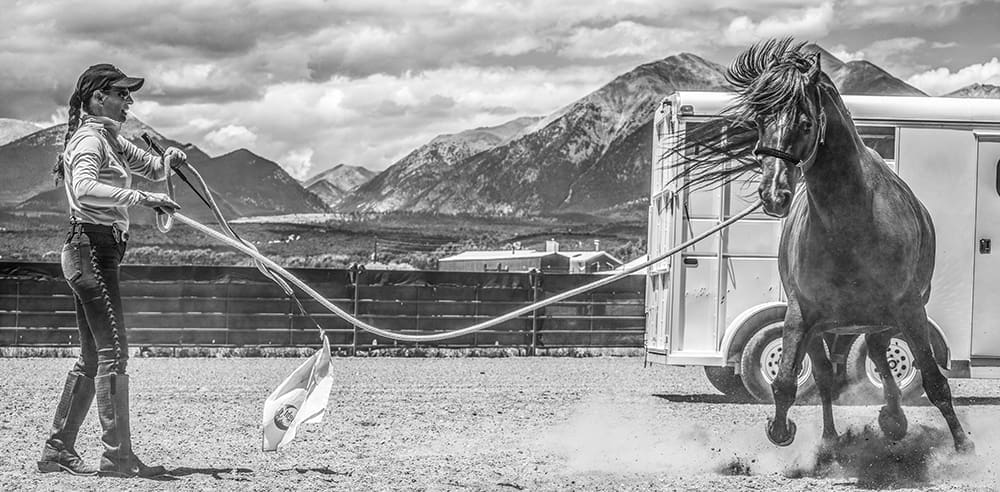Question: I just purchased a seven-year-old gelding. The previous owner was riding him in a single-jointed snaffle bit. Now, I’m looking for a bit for him and he has responded badly to a D-ring snaffle, O-ring snaffle, and a Tom Thumb. He avoids begin bridled then gapes his mouth, yawns and rubs his face on his leg. He won’t bend well to either side and he has even threatened to buck when I ask him to turn. His teeth have been checked. Is he a good candidate for a hackamore? Or what bit would be best?
Answer: With bits, it’s important to remember that the mouthpiece is what the horse feels, the cheek piece is about how you, the rider will give cues (and how subtle your cues need to be). More simply put, the sidepiece is for the rider and the mouthpiece for the horse. From your question, it seems that you have changed the sidepiece but not the mouthpiece when testing different bits.
The single-jointed mouthpiece can be very unpleasant to many horses. With the snaffle sidepiece (snaffle simply means direct pressure), the single-jointed mouthpiece pinches the jaw and squeezes the tongue. In general, horses hate tongue pressure. Most horses gape open their mouth with the Tom Thumb (a bit that is often mistakenly called a snaffle). The Tom Thumb has the same single-jointed mouthpiece but has a curb-style sidepiece. That means it has more force (leverage) on the horse’s tongue when you pull on the reins.
If this horse has lots of training in the past, I’d look for a mouthpiece that relieves pressure from the tongue. It could be that he is fighting the bit because there is too much tongue pressure with all the bits you have tried. The sidepieces may have made the bits look different, but to the horse, all those bits would feel the same.
Find out what professional training your horse has had. Remember that a bit can’t train your horse or create the movements that you want. Your horse needs to be trained to flex and give to pressure no matter what bit he has in his mouth. Make sure that you’re releasing pressure as soon as he gives at all during lateral flexion work. You’ll need to reward the slightest try when working in any bit.
Since your horse is prone to occasional bouts of disobedience, I’d probably have a bit in his mouth instead of moving to a hackamore. I would be unlikely to use a hackamore on a horse that had refused to turn and tried or threatened to buck.
When getting to know any new horse, it’s great to do some basic, rudimentary training from the ground and the saddle. This time will help you establish leadership from the ground and from the saddle and will help your horse understand how you cue. Take time to make sure the horse understands how to respond correctly to the cues you give.
If you came to me for help, I would use a Myler 3-ring Combination bit with the MB04 mouthpiece. This bit takes pressure off the mouth and puts it on the nose, giving the horse the opportunity to respond before he gets mouth pressure. From what you describe, the horse does not like mouth pressure and needs a relief. The mouthpiece on this bit is double-jointed (so it doesn’t collapse in the middle) and has a very low port, giving a small amount of tongue relief.
Once the horse is responding well and is obedient to my light aids, I would move him to a medium-low ported bit (in the combination format or a snaffle or curb), to give him even more tongue relief. You can change the sidepiece later, but your horse will continue to feel better with the tongue relief.
A side note about hackamores: While many feel that a hackamore is less severe because there is no bit in the mouth, not all hackamores are created equally. There are many different types of hackamores and like bits, they may work either off direct pressure or leverage. The side-pull is a type of training hackamore, like the bosal and is a direct pressure device like the snaffle. It can be used with great effects for horses who are willing and trained. The mechanical hackamore has leverage (like a curb bit) and can be quite severe. The mechanical hackamore is not very useful in training the horse to bend, as you need to be able to work the sides of the horse’s mouth independently as you lift the shoulders.



